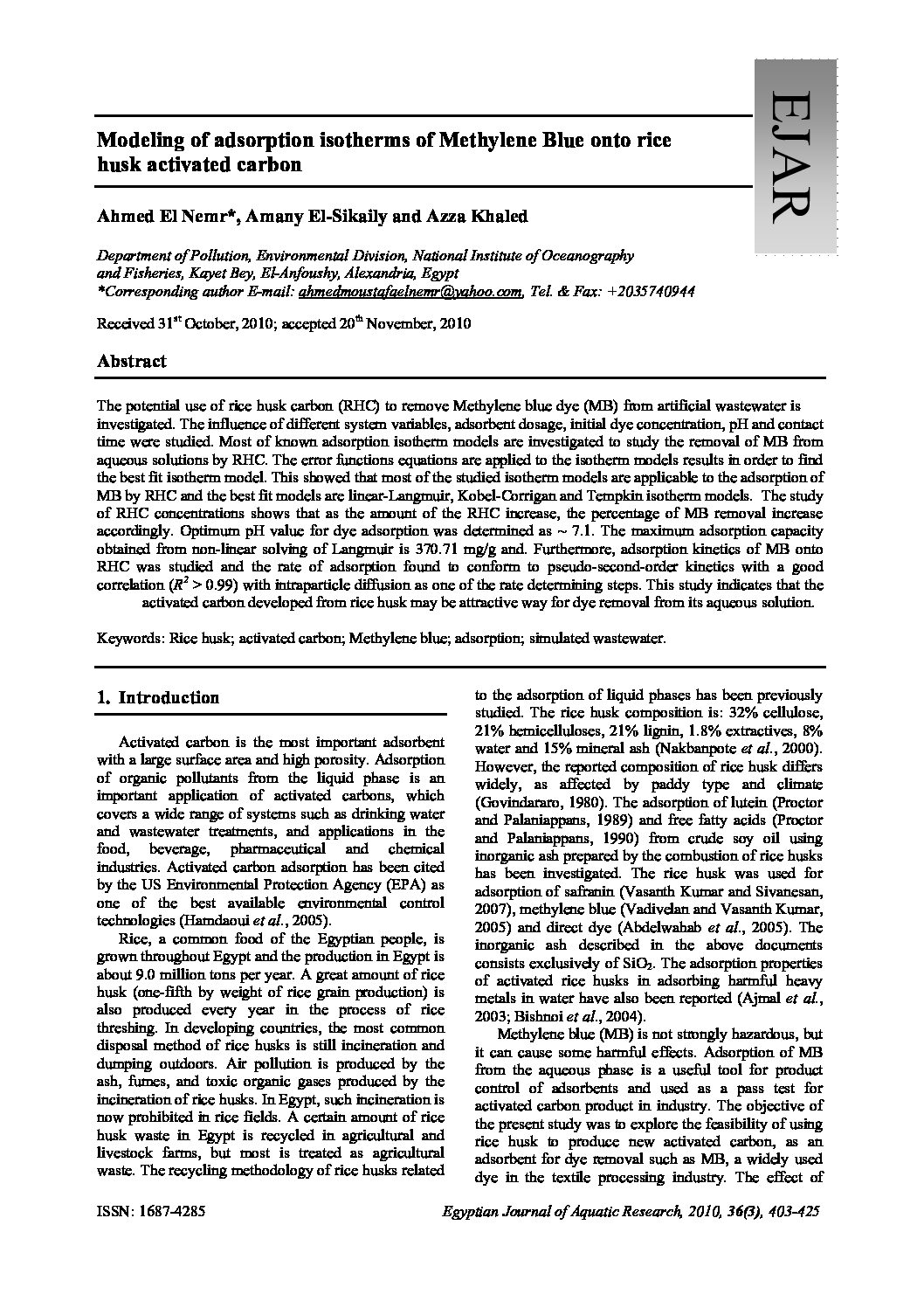Categories
vol-36Modeling of adsorption isotherms of Methylene Blue onto rice
husk activated carbon
Ahmed El Nemr*, Amany El-Sikaily and Azza Khaled
Department of Pollution, Environmental Division, National Institute of Oceanography
and Fisheries, Kayet Bey, El-Anfoushy, Alexandria, Egypt
*Corresponding author E-mail: [email protected], Tel. & Fax: +2035740944
Received 31st October, 2010; accepted 20th November, 2010
Abstract
The potential use of rice husk carbon (RHC) to remove Methylene blue dye (MB) from artificial wastewater is
investigated. The influence of different system variables, adsorbent dosage, initial dye concentration, pH and contact
time were studied. Most of known adsorption isotherm models are investigated to study the removal of MB from
aqueous solutions by RHC. The error functions equations are applied to the isotherm models results in order to find
the best fit isotherm model. This showed that most of the studied isotherm models are applicable to the adsorption of
MB by RHC and the best fit models are linear-Langmuir, Kobel-Corrigan and Tempkin isotherm models. The study
of RHC concentrations shows that as the amount of the RHC increase, the percentage of MB removal increase
accordingly. Optimum pH value for dye adsorption was determined as ~ 7.1. The maximum adsorption capacity
obtained from non-linear solving of Langmuir is 370.71 mg/g and. Furthermore, adsorption kinetics of MB onto
RHC was studied and the rate of adsorption found to conform to pseudo-second-order kinetics with a good
correlation (R2
> 0.99) with intraparticle diffusion as one of the rate determining steps. This study indicates that the
activated carbon developed from rice husk may be attractive way for dye removal from its aqueous solution.
Keywords: Rice husk; activated carbon; Methylene blue; adsorption; simulated wastewater.







